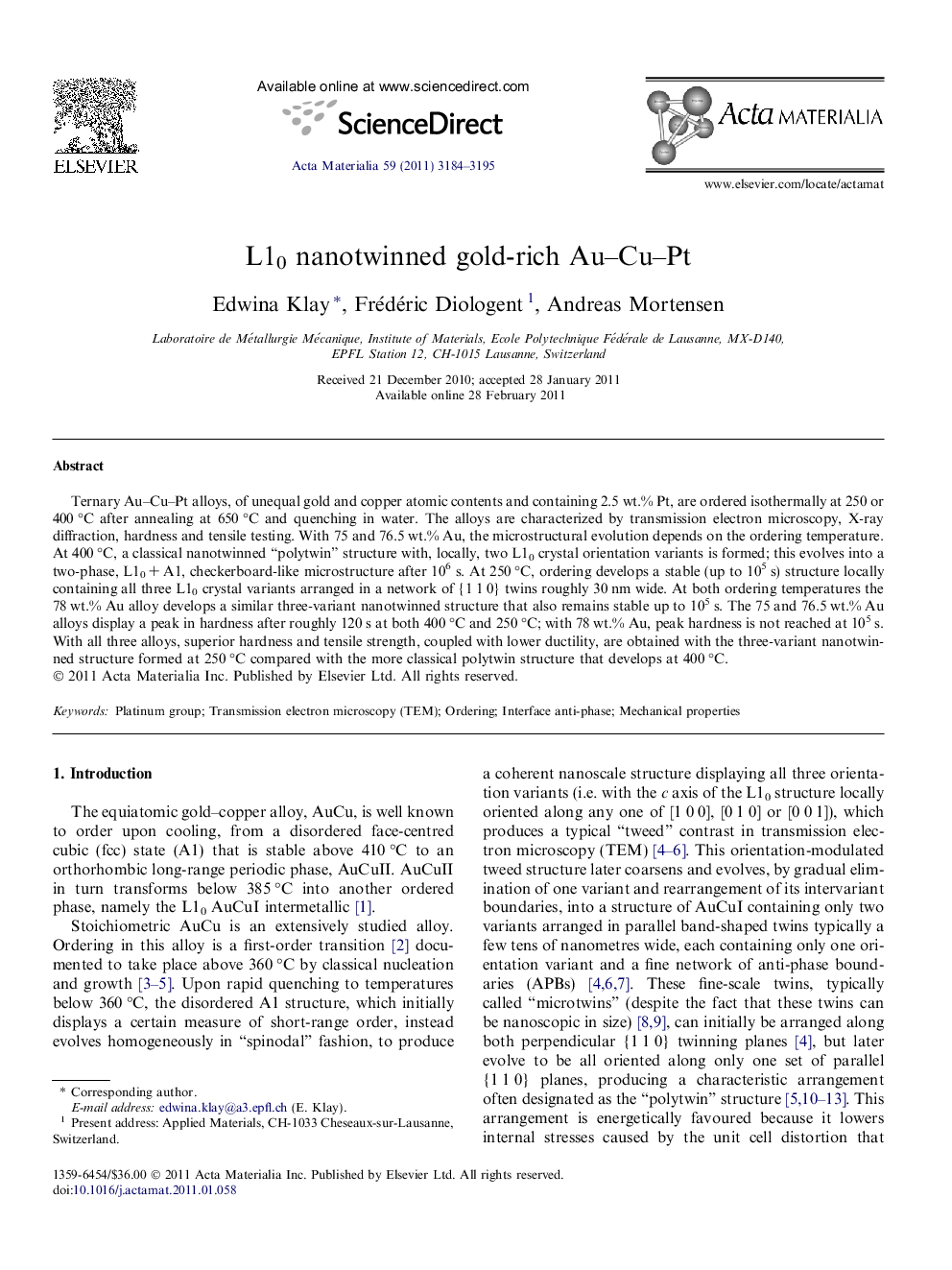| Article ID | Journal | Published Year | Pages | File Type |
|---|---|---|---|---|
| 1447201 | Acta Materialia | 2011 | 12 Pages |
Ternary Au–Cu–Pt alloys, of unequal gold and copper atomic contents and containing 2.5 wt.% Pt, are ordered isothermally at 250 or 400 °C after annealing at 650 °C and quenching in water. The alloys are characterized by transmission electron microscopy, X-ray diffraction, hardness and tensile testing. With 75 and 76.5 wt.% Au, the microstructural evolution depends on the ordering temperature. At 400 °C, a classical nanotwinned “polytwin” structure with, locally, two L10 crystal orientation variants is formed; this evolves into a two-phase, L10 + A1, checkerboard-like microstructure after 106 s. At 250 °C, ordering develops a stable (up to 105 s) structure locally containing all three L10 crystal variants arranged in a network of {1 1 0} twins roughly 30 nm wide. At both ordering temperatures the 78 wt.% Au alloy develops a similar three-variant nanotwinned structure that also remains stable up to 105 s. The 75 and 76.5 wt.% Au alloys display a peak in hardness after roughly 120 s at both 400 °C and 250 °C; with 78 wt.% Au, peak hardness is not reached at 105 s. With all three alloys, superior hardness and tensile strength, coupled with lower ductility, are obtained with the three-variant nanotwinned structure formed at 250 °C compared with the more classical polytwin structure that develops at 400 °C.
► Disordered and quenched AuCuPt alloys with 2.5 wt.% Pt are ordered at 250 or 400 °C. ► At 400 °C, a nanotwinned polytwin structure with two L10 crystal variants develops. ► Then a two-phase, L10+A1, checkerboard-like structure forms after 106 s at 400 °C. ► At 250 °C, a new nanotwinned structure is observed with all three L10 variants.
